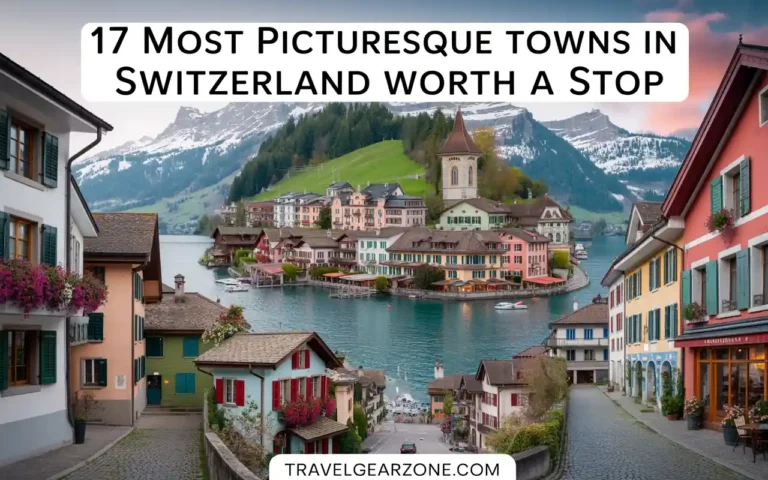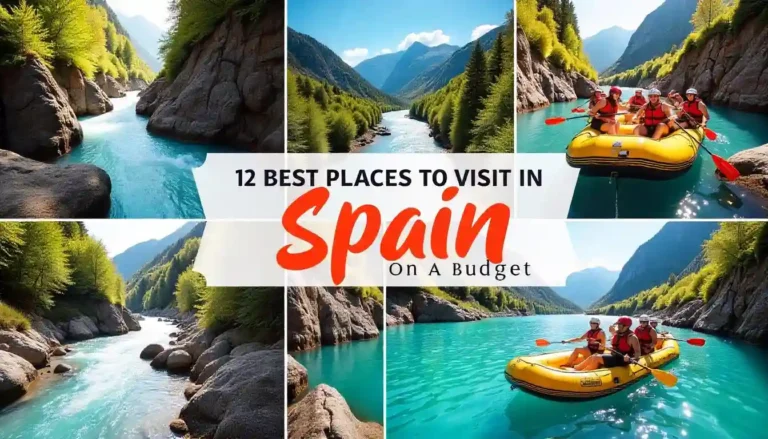20 Most Photographed Places in Western Europe (2025 Travel Guide)
Western Europe is a dreamscape of castles, coastlines, and cathedrals… but only a few Most Photographed Places in Western Europe make you stop mid-step, pull out your camera, and forget the time.
You might already know the usual suspects — the Eiffel Tower sparkling at night, Santorini’s domes glowing in the sunset — but there’s something about this region that makes the ordinary look cinematic too. A laundry line across a Venetian alley, a lone hiker silhouetted on Mont Blanc, or a crooked little café on a cobblestone lane. That kind of thing sticks with you.
And lately? Travel’s become more visual than ever. People plan entire trips based on what they’ve seen on Instagram or TikTok. “Photo or it didn’t happen” is half-joke, half-reality now.
But even if you’re not chasing likes, there’s a good chance you care about capturing the feel of a place. You want images that aren’t just pretty — they pull you back into a moment.
That’s what this guide is for. A curated list of the most photographed places in Western Europe — not just because they’re stunning, but because they work behind a lens.
Some are iconic landmarks, others are more hidden… all have that magic that makes you reach for your camera before you even realize it. Each spot comes with personal tips, quiet corners nearby, and a few cultural details you’d miss on a quick scroll.
2025, oddly enough, might be the best year yet for this kind of trip. Travel is steadier post-pandemic, but not overwhelming like it used to be. Crowds are easier to avoid if you know when to go. And photography has evolved — smarter timing, smaller gear, and better tools for editing on the fly.
This list comes from years of travel across 15+ countries, a lot of trial and error, and plenty of conversations with fellow travelers — plus a few unexpected detours that turned out better than the plan.
So if you’re someone who doesn’t just want to visit Europe but wants to see it, really see it… you’re in the right place.
Photo Tip Legend & Map Preview
(Optional Visual Insert Section)
Before we dive into the actual list, it might help to have a little context on how each photo spot will be laid out — especially if you’re the kind who likes to prep routes or bookmark angles before you even board the flight. Trust me, it saves time later.
You might want to create a simple map — something interactive or printable — that marks each of the Top 20 Most Photographed Places in Western Europe. Include layers or icons for key photo tips at each location. Something like:
| 📍Icon | Meaning |
|---|---|
| 🕐 | Best Time to Shoot (golden hour, blue hour, etc.) |
| 📷 | Gear Suggestion (tripod, drone, wide-angle, etc.) |
| 🚷 | Avoiding Crowds (timing tips, hidden corners) |
| 🤫 | Local Etiquette (sensitive sites, photography rules) |
Pro tip: You can also turn this into a Pinterest graphic or a downloadable one-pager for offline access — surprisingly helpful in spots with spotty data like remote villages or lakeside settings.
15 Stunning Places in Western Europe That Break Instagram (For Good Reason)
We won’t get overly technical with gear, but if something matters (like needing a polarizing filter for lake reflections or why a telephoto lens makes the Matterhorn feel even more massive), we’ll mention it. This isn’t a gear review guide… it’s more like your well-traveled friend giving you a heads-up.
1. Eiffel Tower – Paris, France

It’s probably the most obvious place to start — maybe too obvious — but that doesn’t mean it’s overrated. The Eiffel Tower still stuns, especially when you catch it at the right time. And honestly? Most people don’t.
Sure, you can get a decent shot from Champ de Mars like everyone else, but walk up to Trocadéro at sunrise, and suddenly it’s just you, the tower, and the city still half-asleep. No vendors. No tourists. Just soft light and shadows stretching over the skyline. That’s the real magic.
The most classic view? Probably the one from Bir-Hakeim Bridge, with its dramatic frame lines and quiet symmetry. If you want something less expected, try the rooftop of the Montparnasse Tower. It’s one of the only high points where you can capture the Eiffel Tower in the city, instead of just looming above it.
In spring, cherry blossoms bloom near the tower base — they don’t last long, but if you catch them, the contrast of pink petals against iron lattice is… well, kind of breathtaking. A lot of people miss that detail.
For editing? Slight overexposure works well in soft daylight. Just don’t flatten the shadows — the contrast gives the tower its drama.
Quick tip: Avoid weekends, and absolutely skip mid-day. Not just for the light — the crowds make it impossible to get a clean shot. Especially if you’re trying to take your time or set up something creative.
2. Santorini’s Blue Domes – Oia, Greece

Oia doesn’t really need an introduction. If you’ve ever searched for the most beautiful places in Western Europe or even just “where to go in Europe,” chances are, a photo of Santorini’s blue domes popped up. It’s that postcard-famous. And yeah… it’s just as stunning in person. Maybe even more so, especially when the light hits those domes in the late afternoon.
What makes Oia so visually addictive? It’s the contrast — whitewashed walls glowing gold in the sun, sea stretching out like glass, and that piercing blue atop every little chapel. It’s minimal, yet somehow overflowing with color.
The biggest catch? Everyone knows it’s photogenic. Which means those sunset shots from the castle ruins get crowded fast. Like… elbow-to-elbow packed. If you want a cleaner photo (and space to breathe), go early. Not just early in the day, but early in the season. Late March or early April is usually quieter. And the light is still dreamy.
For photography, vertical shots work better here. It’s a town built on layers — steps, rooftops, winding alleys — so your frame needs depth. Drone shots are spectacular too, but Greece has strict rules. Oia especially. You’ll need a permit or, at the very least, to fly low and discreetly.
There are some hidden alleys where you can snag dome shots without people in them. Look around the edges of the village… or just follow your curiosity until a quiet corner appears. That’s how I found a tiny rooftop café with a view that honestly beat every Instagram spot I had saved.
Editing-wise? Lean into the blues. But not too much. The island already gives you a cinematic palette — you don’t have to push it far.
3. Neuschwanstein Castle – Bavaria, Germany
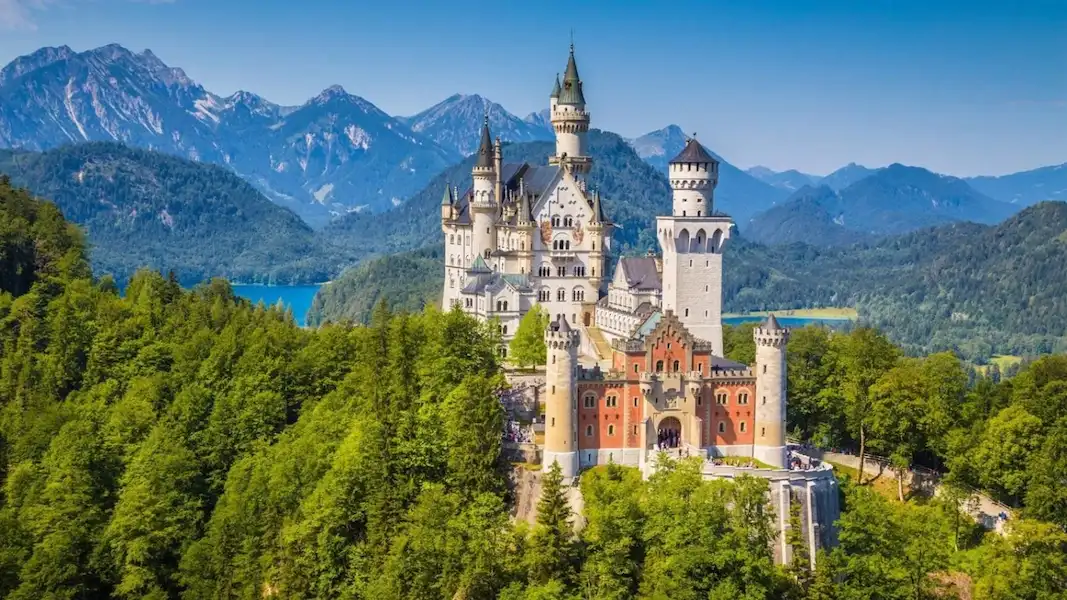
This is the one that looks like it was designed for Disney. And funny enough… it was. Well, sort of. Neuschwanstein Castle is the inspiration behind Disney’s Cinderella Castle — and when you see it rising above the trees with the Alps in the background, it makes perfect sense.
Set in the southern hills of Bavaria, surrounded by pine forests and misty peaks, this castle isn’t just one of the Top 20 most photographed places in Western Europe — it’s also a top contender on any Top 10 most beautiful city in Europe list, even if it’s technically more countryside than city.
Most photographers flock to Marienbrücke (Mary’s Bridge) for that sweeping fairytale angle. It’s a bit of a hike, but worth it. If you want something less cliché, wander off the beaten trail into the forest nearby. There are a few lesser-known paths that offer moody, tree-framed compositions. More natural landscape… less touristy.
The castle looks different in every season. In summer, it’s crisp and clear. In fall, it’s cinematic — golden leaves, soft fog, that kind of nostalgic palette that editing apps dream of replicating. Just… don’t go in thick winter if you want detailed shots. Snowstorms can blur the whole structure, and not in a magical way.
One more thing — morning light hits it from the side, giving you great shadows for depth. Try a wide lens for context, or a zoom to compress the details against the mountain backdrop.
And yeah, it’s tourist-heavy. But if you wait it out just a little… if you’re patient… it suddenly empties, and you get this quiet, surreal moment like you’re in a real-life storybook.
4. The Colosseum – Rome, Italy
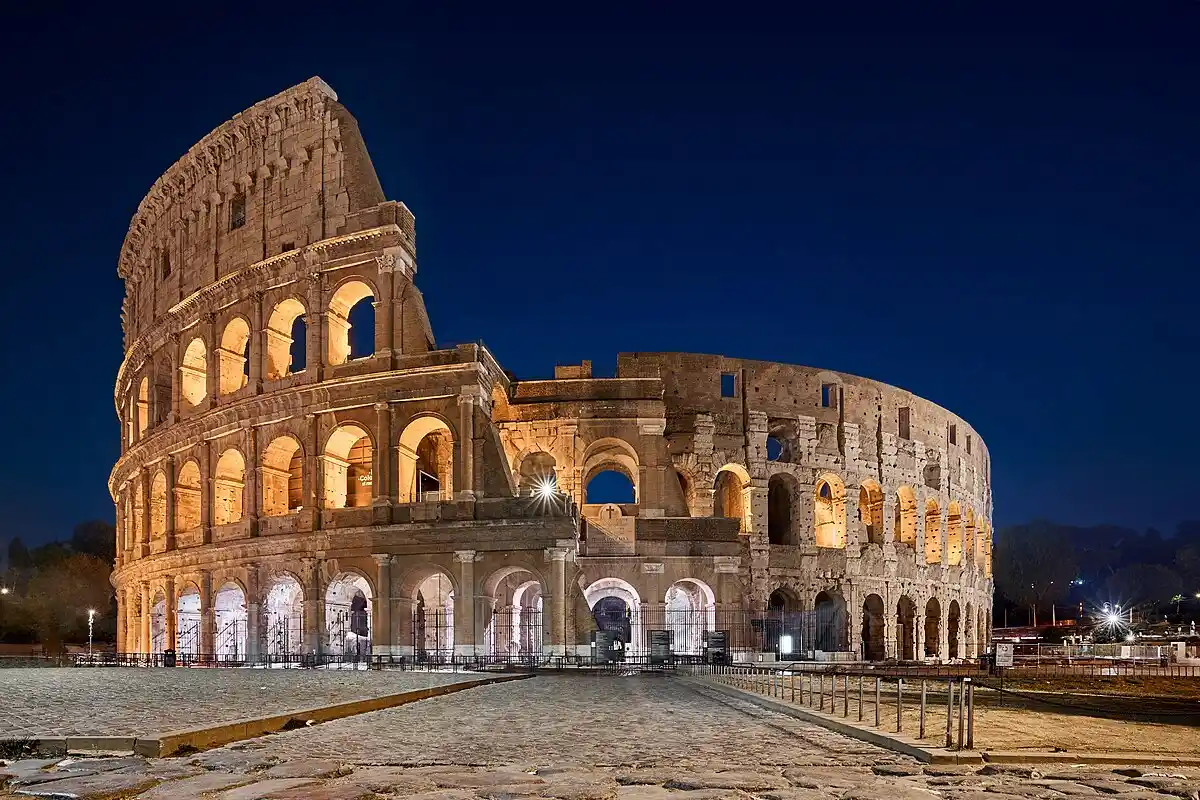
Rome doesn’t ease you into beauty. It just hits you with it — loud, ancient, and all at once. The Colosseum might be the most obvious landmark in the city, but that doesn’t make it any less impressive. It’s not just one of the Top 10 most photographed places in Western Europe, it’s one of the most recognized structures in the world.
That said, it’s surprisingly hard to photograph well. Too many tourists. Too much motion. Too many cars zipping past. The trick? Golden hour from Via Nicola Salvi, just up the stairs overlooking the outer walls. The light softens everything, and you can frame the arches without obstruction.
Rainy day? Perfect. Find a puddle. Use it for a reflection shot. Glass balls or reflective props work well too. It’s a fun trick that makes your image look like it took way more effort than it actually did.
For a more immersive angle, wander toward the Roman Forum and shoot the Colosseum from behind or from under the archways. You’ll get texture, shadow, and — if you’re lucky — a few gladiator-costumed locals doing their thing. Don’t be afraid to include them in the frame. It’s cheesy, sure, but… also real. That blend of old and new is what Rome is.
If you’re building a visual travel journal, this spot is essential. It’s not just iconic — it’s layered. History, architecture, atmosphere… even chaos. All of it adds texture to your shots.
Just watch your pockets. And maybe don’t set your tripod down unattended. Rome has its charms, but it’s also got hustle.
5. Hallstatt Village – Austria
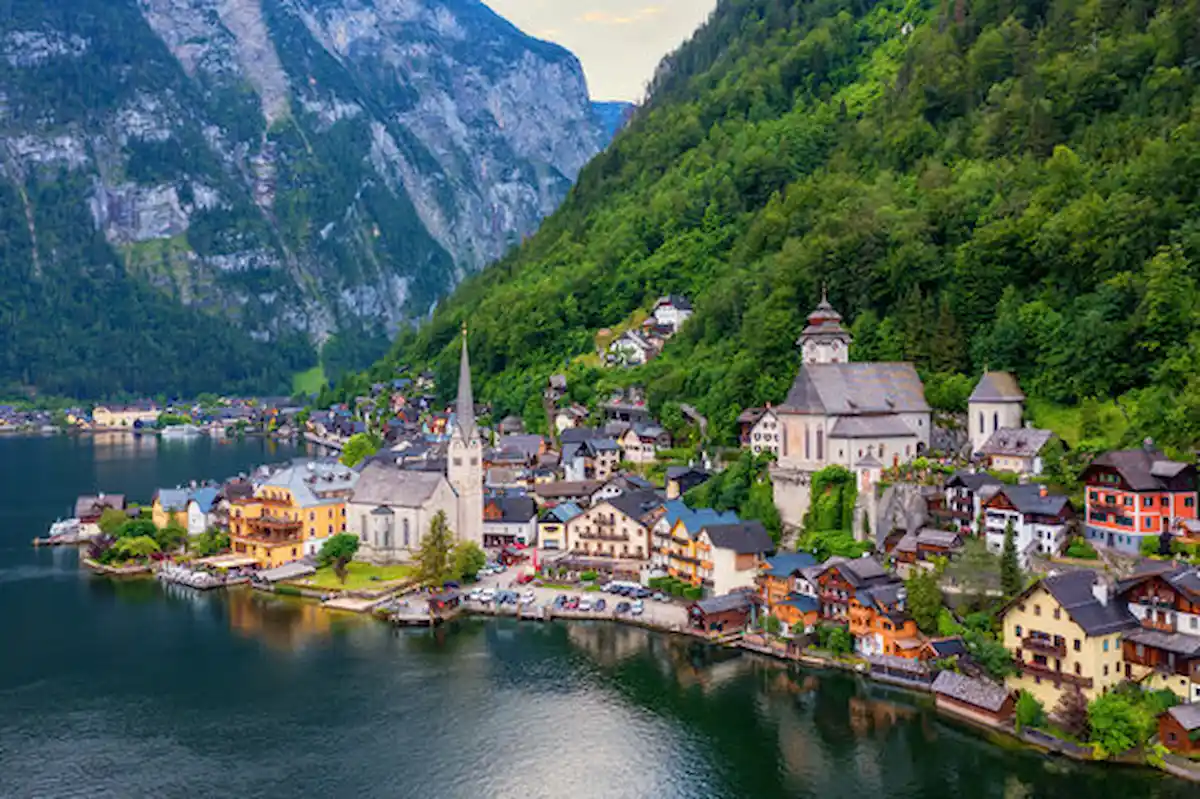
It’s tiny. Peaceful. Ridiculously photogenic. Hallstatt almost feels like a movie set — the kind of place you think can’t possibly exist until you step off the boat and realize… oh, wow. It’s real. A mirror-like lake, pastel houses, church steeple, and a mountain wall that seems to cradle the entire town. That lakeside setting? Practically made for photography.
This one sneaks into so many lists — from Top 20 most photographed places in Western Europe to Top 10 best city in Europe — though calling it a “city” is stretching it. Still, it’s one of those most beautiful places in Western Europe where even a phone photo looks like a postcard.
If you’re coming for the classic shot — the one with the village reflected in the water — go to the edge of town early in the morning. Just after sunrise. Before the tour buses arrive and the lake goes from still to slightly chaotic. That’s when you’ll get the cleanest mirror reflection.
The Hallstatt Skywalk gives you a more dramatic, high-angle shot. But if you don’t love heights… maybe not your thing. For something quieter, walk the side streets up behind the main square. That’s where I found a weathered staircase with flower pots and a view that felt more personal than picture-perfect.
For gear, a neutral density filter helps flatten the lake when the wind picks up. It smooths everything out, turns water into glass. And if you’re coming in winter, be ready for snow — the rooftops look like frosted gingerbread houses.
It gets crowded though. Like… really crowded, especially in summer. So if you want that peaceful lakeside scene? Come in shoulder season, maybe late September or early May. Trust me, it’s worth the slight chill in the air.
6. Lavender Fields – Provence, France
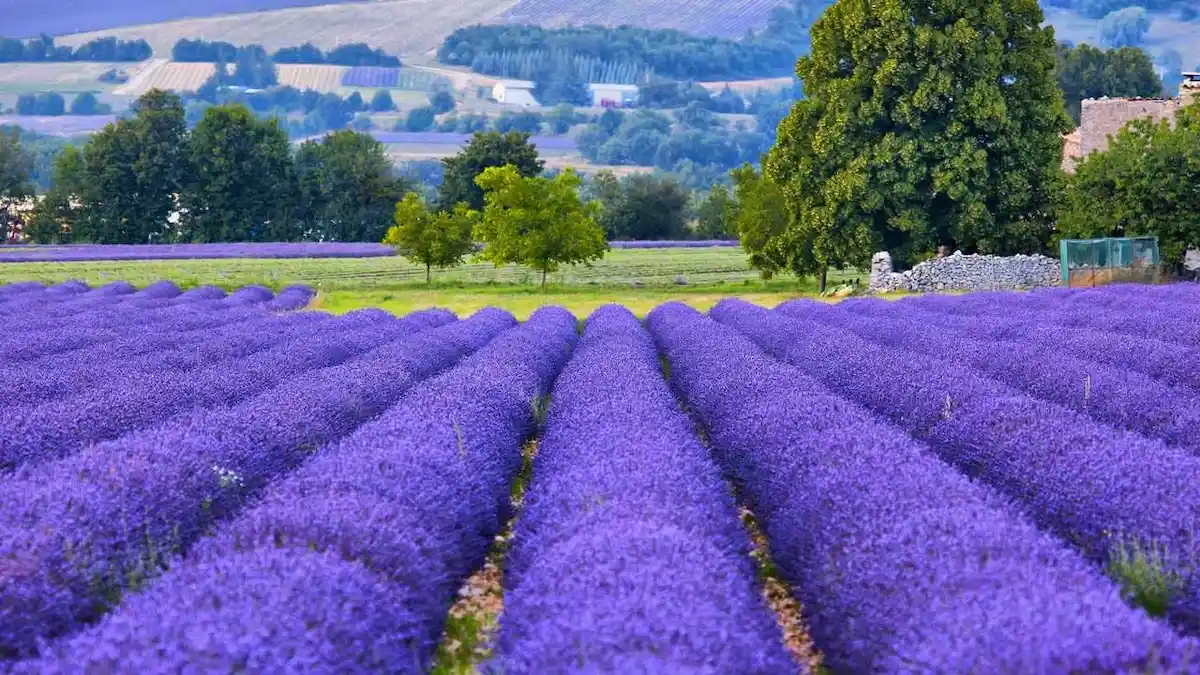
If scent could be photographed… Provence would be in every travel album ever made. These endless stretches of violet seem almost fake at first. Like someone boosted the saturation too far. But they’re real. And during bloom season — usually mid-June through July — they’re spectacular.
Valensole Plateau is where you’ll find the most iconic views. Rows upon rows of lavender rolling through the fields like ocean waves. Bees buzz around you, butterflies drift by. It feels like you’ve stepped into a dream — or a perfume ad, depending on how you shoot it.
What makes it so photogenic isn’t just the color, though that helps. It’s the light. Especially at golden hour. The way it hits the rows creates this surreal depth… like they go on forever. It’s no surprise this spot lands in guides to the most photographed places in Western Europe again and again.
Some fields sit right next to sunflower patches. So yeah… lavender in one direction, yellow blooms in the other. That combo alone makes this one of the top 20 most beautiful cities in Europe to visit for photographers, even though you’ll mostly be in the countryside between towns.
Macro shots work well here too. Focus on a bee, or the texture of the buds. Bring a low-angle lens and a shallow depth of field if you want those dreamy blurred foregrounds.
A heads-up: midday sun can make the color flat and harsh. Early morning or just before sunset is best. And wear something light — you’ll be out in the open, with no shade, chasing the perfect angle.
Oh, and one more thing… don’t pick the flowers. It’s tempting, I get it. But many of these fields are privately owned. Some have signs. Some don’t. Either way, respect the space. The photo’s better when you leave it untouched.
7. Cliffs of Moher – Ireland

Wild. Windy. Beautiful in that moody, dramatic way only the Atlantic coastline can deliver. The Cliffs of Moher don’t beg for attention — they command it. Towering over the crashing waves, stretching for miles, with seabirds wheeling overhead and a soundtrack of wind and distant thunder.
This place is all about scale. The kind that makes you feel small in the best way. It’s definitely among the most beautiful places in Western Europe, not just for the view, but for the feeling. The raw, untamed kind of beauty that doesn’t care whether you brought a camera or not.
That said… bring one.
For photography, a wide-angle lens is your friend here. You want that drama, that expanse. But be cautious — really cautious. Some of the most tempting edges have no barriers. And people have fallen. More than once. So yeah… that perfect shot isn’t worth the risk. Stick to the safe paths.
Fog? Don’t curse it. Embrace it. A little mist drifting off the cliffs adds mood, softens the harshness. Some of my favorite shots came when I thought I’d get nothing. Just leaned into the gloom and slowed the shutter down a bit. Used a polarizing filter to cut glare. It changed everything.
If you’re lucky, you’ll spot puffins on the sea stacks. Or a rainbow just after a storm. Those small, fleeting moments? That’s what sets a great photo apart from a good one.
For editing, boost the contrast gently. Let the cliffs be dark and the sky stretch wide. And maybe don’t straighten the horizon too perfectly — let it tilt, just a little. It fits the mood.
8. The Louvre & Glass Pyramid – Paris, France
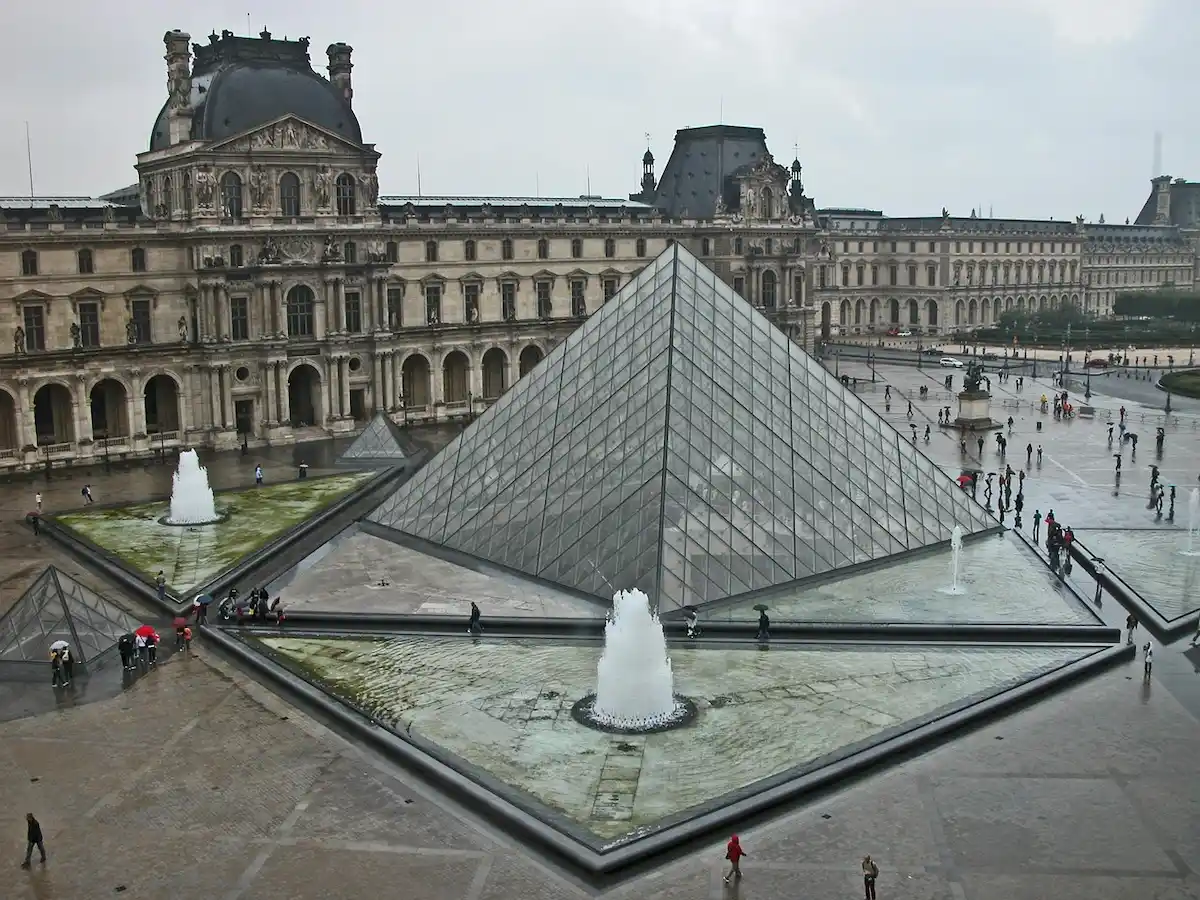
You’d think it would be the art inside that gets all the attention. But somehow, it’s the outside of the Louvre that stops people in their tracks — especially once the sun dips low and the glass pyramid starts glowing.
It’s not just one of the most photographed places in Western Europe — it might be one of the most photographed places, period. Day or night. Rain or shine. That courtyard becomes a magnet for phones, DSLRs, and even full-blown film crews.
The best shots? Honestly, the rainy days. I know, not what you’d expect. But the puddles… they create perfect reflection pools. Long exposures at night, right after the lights come on, capture the glass glowing like a crystal. It’s got that surreal sci-fi look that still somehow fits the setting.
If you’re into silhouettes, stand across from the pyramid at sunset. The shadows stretch, the colors go warm, and suddenly you’ve got figures walking past ancient stone — frozen in time. It’s elegant, but raw. One of those iconic photo destinations in Europe that feels more cinematic than static.
During peak hours, it’s almost impossible to get a clean frame. But early morning or late evening helps. Minimal gear is a smart move too — there’s security everywhere, and bulky setups can slow you down or get flagged.
This isn’t just a tourist hotspot. It’s part of Paris’s identity — one of the crown jewels in what’s arguably the most beautiful city in Western Europe (or at least a solid contender for Top 10 best city in Europe).
There’s something powerful about being surrounded by centuries of creativity and still finding a fresh angle of your own. You just have to look for it.
9. Venice Canals – Venice, Italy

Venice is one of those places that seems impossible to photograph badly. Almost unfairly so. Every corner — every crumbling wall, every reflection in the water — looks like it was placed there for a painting. Which makes it both a blessing and a challenge. How do you make something this perfect feel personal?
Start early. Before sunrise, if you can. The gondolas are still, the canals silent, and the morning mist gives everything a dreamy softness. That’s when Venice whispers instead of shouts. Especially around the Bridge of Sighs — you’ll find your best gondola angles there.
A boat tour helps too. Low-angle shots from the water capture the symmetry of windows, the curve of bridges, and those tiny everyday details people miss from street level. Add in a bike leaning on a wall, laundry drifting in the breeze, and you’ve got a snapshot of Venetian life that goes beyond postcards.
Want a hidden gem? Wander away from the Rialto Bridge or San Marco. Follow the alleys until you lose the crowd. That’s where you’ll stumble across moments worth remembering… and photographing. A cat sleeping in a window. A painter setting up beside a canal. A couple slow dancing near a gondola station. (Saw it. Still thinking about it.)
Editing Venice? Warm tones bring out the ochres and pinks in the architecture, but don’t overdo it. Let the textures speak. Venice doesn’t need heavy filters. It just needs you to notice.
Also… avoid acqua alta season if you want stable ground under your feet. High tide can flood major paths. Romantic in theory, frustrating in practice. Trust me.
Venice makes nearly every list of the Top 20 most beautiful cities in Europe — and for photographers, it deserves the top spot every time.
10. Mont-Saint-Michel – Normandy, France
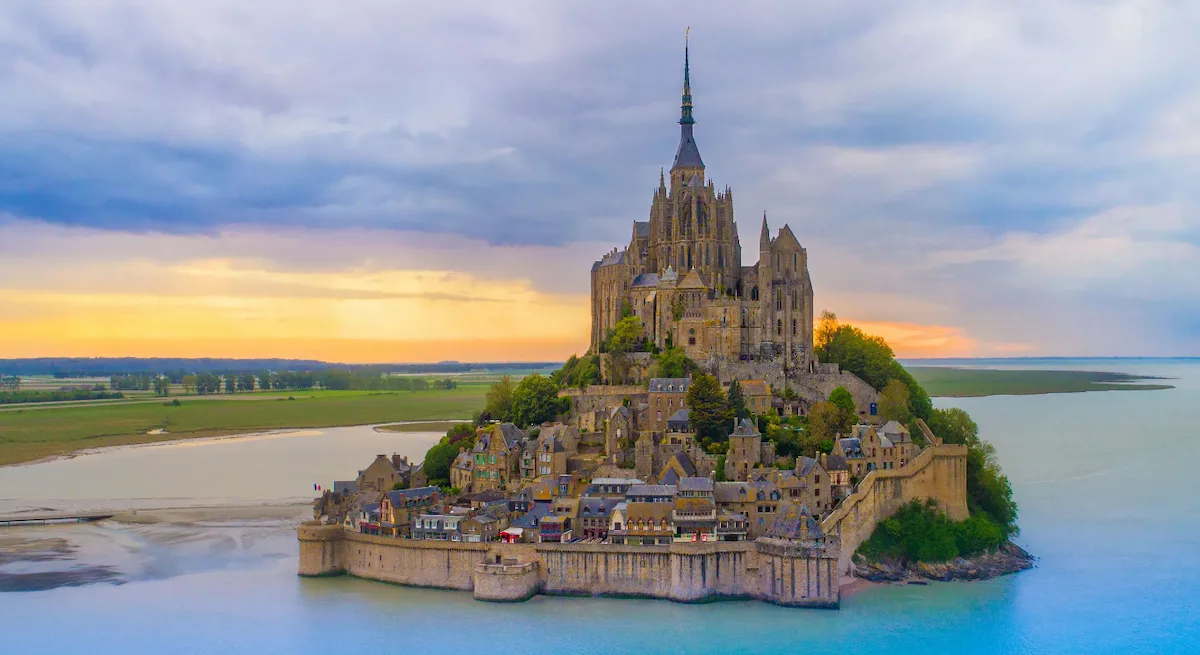
It rises like a dream — a hilltop village turned medieval fortress, floating in the sea when the tide comes in. Mont-Saint-Michel isn’t just a pretty photo… it’s a full-blown fantasy. Which is probably why it lands on every list of the most photographed places in Western Europe and then some.
The big reveal happens as you drive in. From miles away, the abbey starts to emerge from the mist — this surreal silhouette perched above the flats. It’s worth pulling over. Those long-lens road shots can be epic, especially if you catch early fog or a storm blowing through.
Timing is everything here. The tides are wild. Sometimes the island’s surrounded by sand, sometimes by water — and the mood shifts entirely. Tide charts are your best friend. Want that magical “castle floating at sea” look? Aim for high tide during sunrise or blue hour.
A drone can give you an unmatched aerial perspective, but France is strict about flight rules, especially around UNESCO sites. Some areas are completely no-fly zones. Double-check. Or skip the drone and hike the nearby ridges for a naturally elevated angle — less hassle, and honestly… better storytelling.
Up close, inside the walls, photography gets tighter. You’re working with narrow alleys and shifting light. Focus on details: stone textures, mossy stairs, flickers of candlelight inside the chapel. It’s a whole different kind of beautiful — more intimate, more grounded.
The vibe shifts depending on when you go. Summer’s busy. Winter’s quiet and eerie. Both have charm. But if you’re chasing atmosphere over sunshine, shoulder seasons are golden.
It’s not just a most beautiful place in Western Europe — it’s one of the most haunting, surreal, and unforgettable. And yes… you’ll take way more photos than you planned.
11. The Matterhorn – Zermatt, Switzerland
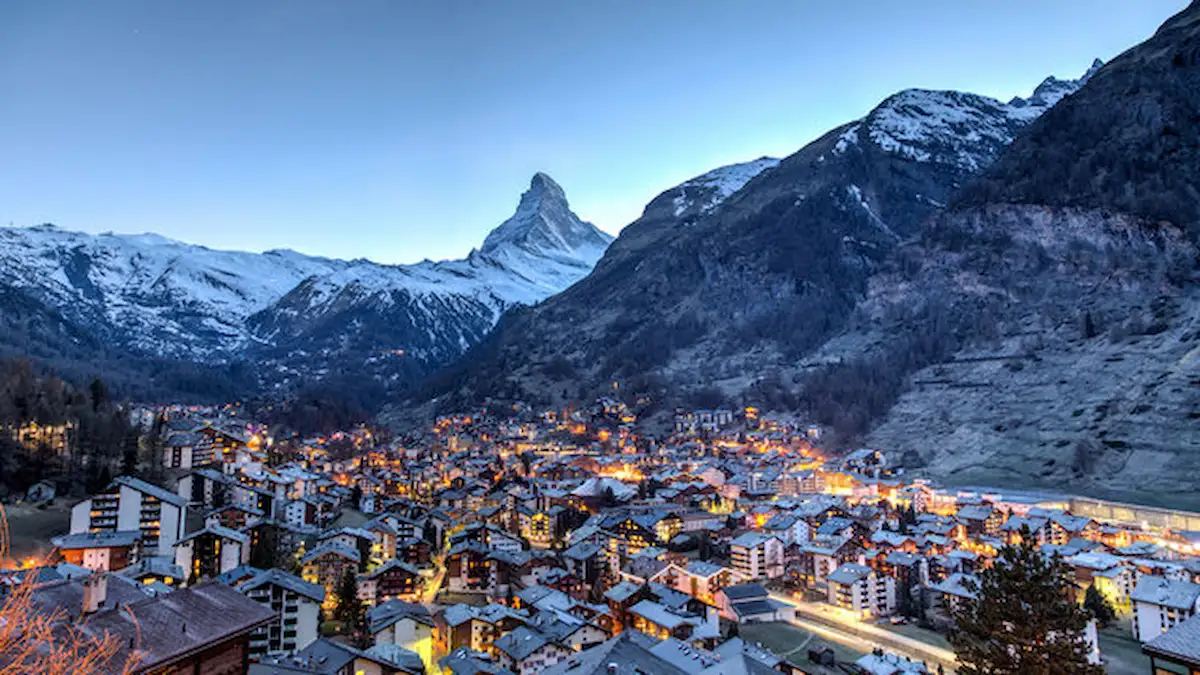
Few alpine peaks are as instantly recognizable as the Matterhorn. That sharp, almost symmetrical pyramid cuts into the sky like something out of a storybook — and when it reflects perfectly in the still waters of Stellisee Lake at sunrise, well, it feels almost unreal. That’s the shot most people dream of. If you’re aiming for an epic composition, the Gornergrat train offers one of the best views, especially in the soft light of dawn.
Photographers chasing isolation in their frames should pack a telephoto lens. It helps cut out the surrounding chaos and focuses solely on the mountain itself. And if you’re visiting during peak season, aim for weekdays — early morning is your best bet to dodge the crowds.
12. Bruges Canals – Bruges, Belgium

Bruges is like a living painting. The canals, flanked by step-gabled houses and arched stone bridges, have a magical symmetry that makes them incredibly photogenic — especially during golden hour at Rozenhoedkaai. That soft, buttery light casting reflections in the water? Perfect.
For crowd-free shots, wander the quieter corners early in the morning or late at night. A tripod helps with long exposures, and don’t forget portrait opportunities — the medieval facades offer a stunning backdrop. Fall or spring is ideal for color, but honestly, Bruges doesn’t have a bad season.
13. Pena Palace – Sintra, Portugal
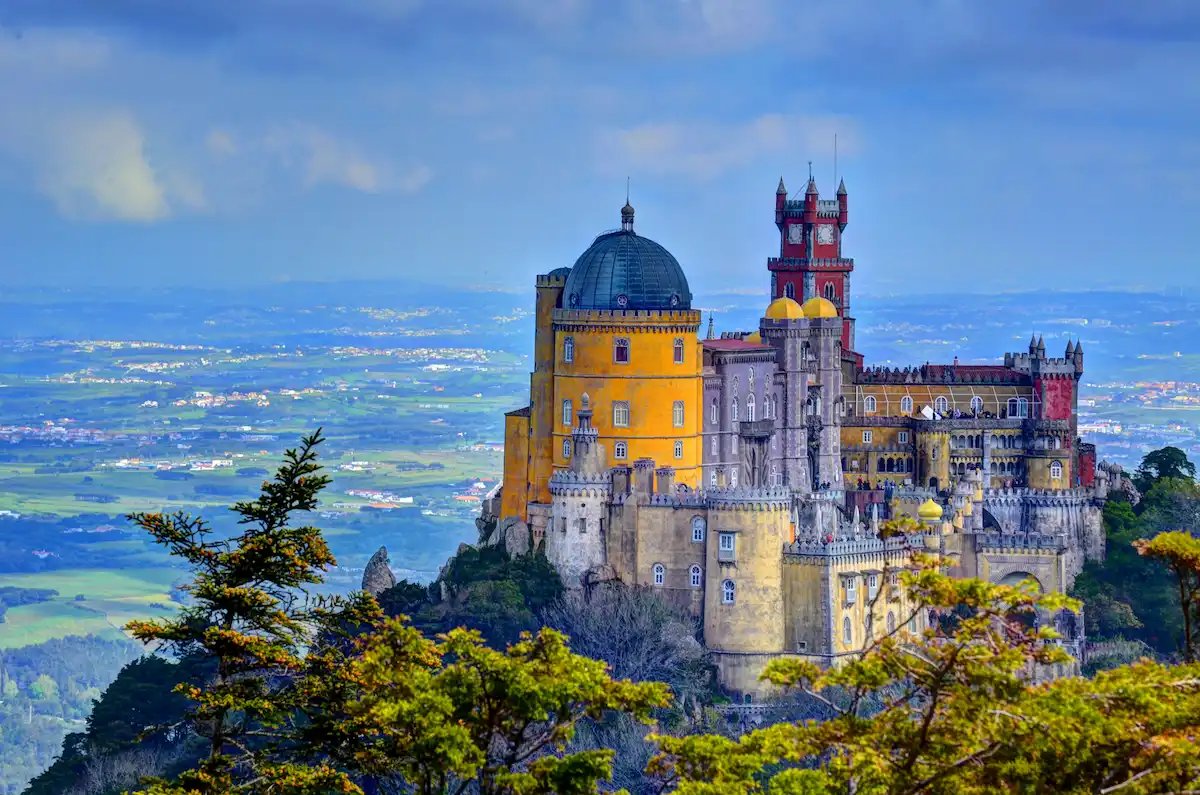
It’s a castle… but not as you know it. The bold reds, yellows, and purples of Pena Palace look like something out of a fantasy novel, perched high in the misty hills of Sintra. Overcast days actually work in your favor here — they deepen the saturation and make those colors pop like crazy.
A telephoto lens is great for isolating architectural details, but if you’re flying a drone (check local rules), you can capture the palace’s striking symmetry from above. Don’t just stick to the castle though — the surrounding forest trails give you interesting foregrounds and quieter moments for storytelling.
14. Giant’s Causeway – Northern Ireland
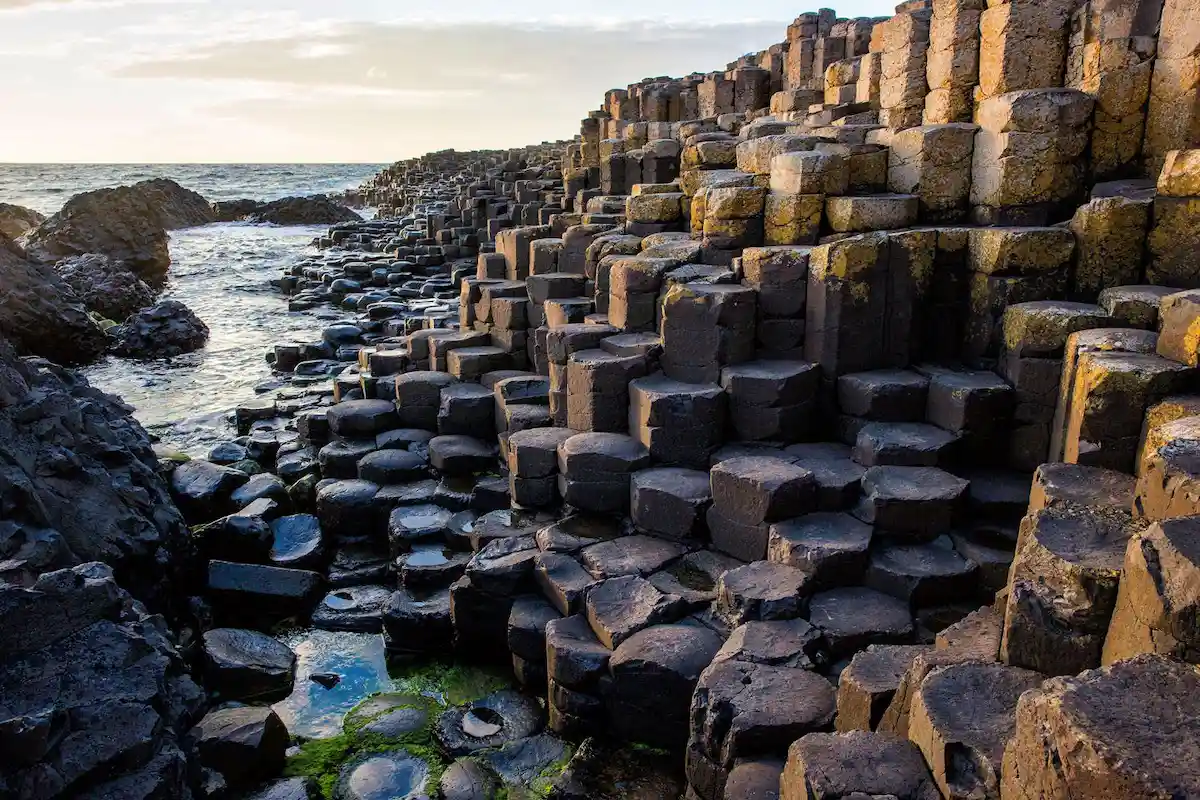
These basalt columns look alien… like nature had a math obsession and created this geometric masterpiece. For photographers, the best time to visit is during low tide when more of the stones are exposed. Add a slow shutter speed when the waves crash in, and you’ve got drama.
But be careful — it gets slippery, especially during sunrise and sunset when you’re likely to be there for that golden light glow. Bring sturdy shoes, and maybe a friend for safety. This spot is all about texture, repetition, and raw natural power.
15. Sagrada Família – Barcelona, Spain

Gaudí’s wild, unfinished cathedral is a surreal mix of gothic and organic forms — inside and out. While many shoot it from the front, a more balanced view is from across the little lake at Plaça de Gaudí. The reflection adds dimension, and early mornings mean softer light and fewer people.
Step inside and you’ll see why photographers get giddy — beams of colored light streaming through stained glass create a spiritual kaleidoscope. Bring a wide-angle lens and patience. Avoid weekends and major religious holidays when crowds and tour groups flood the space.
16. Cinque Terre – Vernazza, Italy
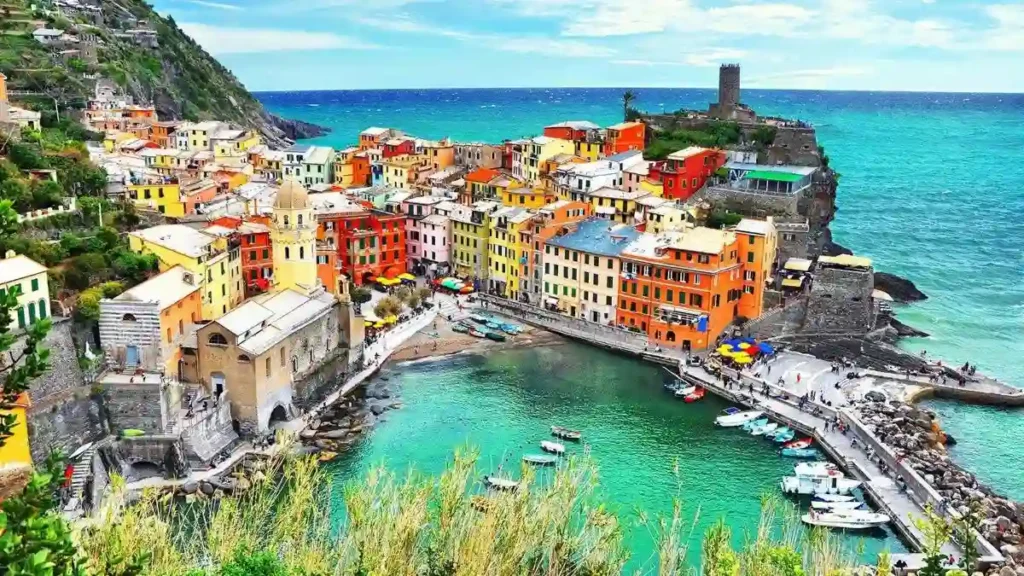
If you’ve seen a photo of pastel houses tumbling down a cliff toward sparkling water, there’s a good chance it was Vernazza. The viewpoint from the trail toward Monterosso is where that iconic photo happens. Blue hour — that soft, moody moment just after sunset — works wonders here.
Tripods are tricky due to space, but a mini one or steady hands will do. If you’re posting to social media, vertical framing captures more depth and plays better on mobile screens. Visit in shoulder seasons for fewer crowds and softer light.
17. London’s Tower Bridge & The Shard – London, England
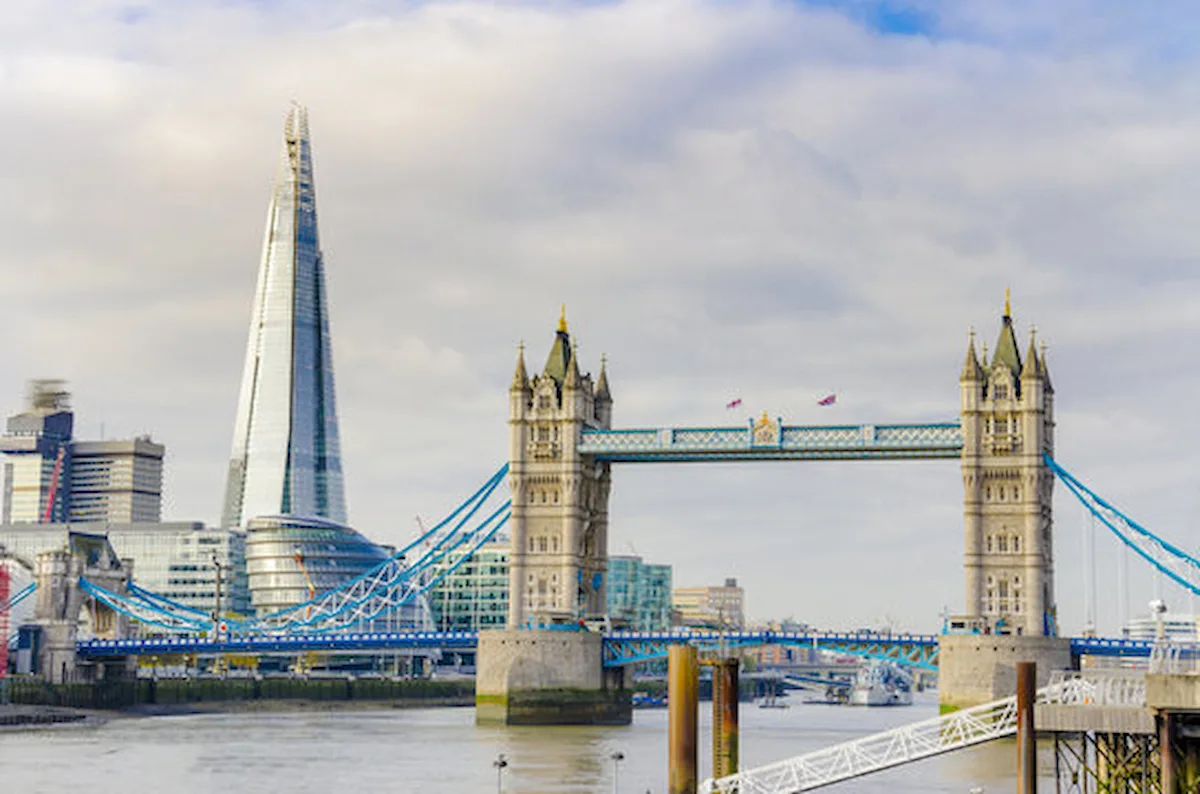
This is where old-world charm and sleek modernity collide. Frame Tower Bridge and The Shard together to show that contrast — ideally at dusk when the city lights reflect on the Thames. St. Katharine Docks offers a cleaner angle, or cross Millennium Bridge for more space to shoot.
Long exposures smooth out river ripples, and don’t be afraid to experiment with silhouettes. Sunrise works if you want the place to yourself… just bring a jacket, London mornings can be brisk even in summer.
18. Amsterdam’s Canal Belt – Netherlands

Golden bridges, classic bikes, and narrow canal houses all align in Amsterdam like they were made for Instagram. Autumn adds those rich warm tones, while misty mornings add a romantic haze. For unique angles, hop on a canal tour — shooting from water level changes everything.
Low-angle compositions with bikes or flowers in the foreground add that quintessential Dutch charm. Early mornings are best for light and crowd-free reflections. If you’re short on time, focus on the Nine Streets (De Negen Straatjes) area — it’s compact and loaded with photo spots.
19. Reine, Lofoten Islands – Norway
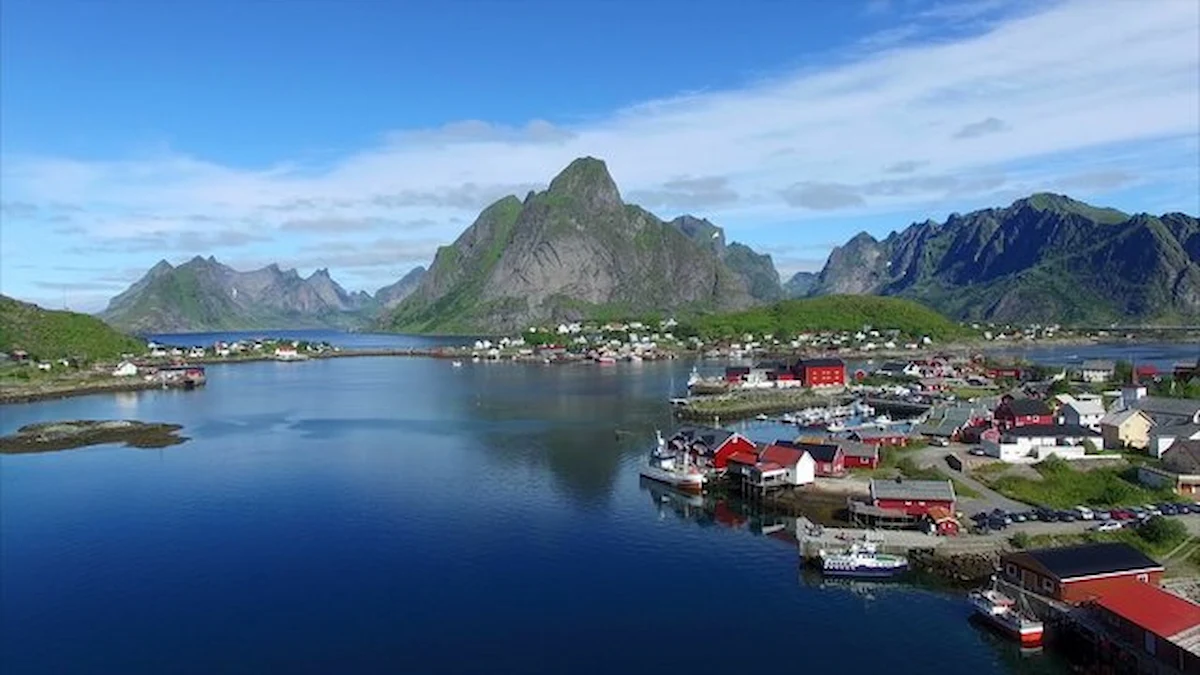
Tucked deep in the Arctic Circle, Reine feels like a postcard brought to life. Those red fishing cabins against snowy peaks — it’s peak cozy vibes, especially with the low, golden light you get up here. If you’re lucky, you might catch the Northern Lights doing their dance overhead.
Bring a tripod. You’ll need it for low light and aurora shots. March and April offer a sweet spot — there’s still snow, but longer daylight hours mean more shooting time. Wide-angle lenses capture the dramatic landscape, while tighter crops work for cabin details and textures.
20. Monaco from Above – French Riviera

This view is all about contrast — mega yachts in turquoise water, tightly packed buildings, and the occasional old stone turret peeking through. The Tête de Chien viewpoint gives you a panoramic look at the principality, especially photogenic at sunrise when the light slices through the haze.
A zoom lens or drone is essential here — Monaco is compact, and getting height helps show just how much is packed into one cliffside space. Bonus: golden light reflecting off glass buildings adds a bit of dazzle.
How to Plan a Photographic Journey Through Western Europe
Planning a photo-worthy adventure across Western Europe isn’t just about pointing your camera at famous landmarks — it’s about moving with purpose. Whether you’re chasing golden light in Cinque Terre or looking for those misty fjord shots in Norway, how you structure your trip makes a huge difference.
Ideal Route Planning: North–South or Theme-Based
There are two great ways to go about this. You could start from the north — say, Amsterdam or Copenhagen — and move down through Germany, France, Switzerland, and finally to the warm colors of Spain or Portugal. That route gives you changing climates, light, and architecture — all great for visual variety.
Or go theme-based. Are you into castles? Start in Bavaria, jump to the Loire Valley, then hit Sintra in Portugal. Love coastal towns? A route from Nice to Cinque Terre to the Amalfi Coast might be your dream circuit.
Both styles work — just depends on your goals (and how much time you’ve got).
Photography Budget Tips
Keeping things budget-friendly without skimping on gear is a skill. Invest in a good mirrorless travel camera that’s lightweight and still packs quality. Don’t forget gear insurance — especially if you’re flying budget airlines or riding trains frequently.
For mobile photographers, getting a local SIM card with generous data (especially in the EU) is helpful for cloud backups and photo apps. And if you’re bringing a drone, remember you might need a registration in some countries — plus, drone flying is banned outright in many city centers.
Photo Etiquette: Read the Room (and the Signage)
Some spots — like churches in Rome or small villages in Portugal — really frown on flash or intrusive setups. Religious sites especially often ask for discretion. If you’re shooting street life, a smile and nod can go a long way before snapping portraits of locals.
Also, avoid blocking walkways or climbing over fences just to “get the shot.” A respectful traveler gets better moments anyway — people tend to open up more.
Must-Have Apps for Photographers
A few tools can totally change how you shoot on the road:
- SunCalc: Know exactly when golden hour hits your next location
- Snapseed: Quick mobile edits without overdoing it
- Lightroom Mobile: Sync your pro edits across devices
- PhotoPills: For planning those Milky Way or sunrise shots just right
Safety Tips at Photo Hotspots
Pickpockets know where the tourists with expensive cameras hang out. Always watch your bag in places like Barcelona’s Gothic Quarter or Rome’s Trevi Fountain. Avoid flashing gear unnecessarily, and consider using an anti-theft camera backpack with hidden zippers or slash-resistant straps.
Travel-Friendly Gear
Sometimes, less is more. A mini tripod or GorillaPod can sub in for a heavy-duty setup. Pack extra lens wipes, an ND filter for daylight shots, and don’t underestimate the power of a simple sling camera strap that keeps you ready without drawing attention.
Final Thoughts
Taking beautiful photos in Western Europe is easy — the place is a living postcard. But the deeper goal? Capture a moment that feels like something.
It’s easy to get caught up chasing perfect shots of the Eiffel Tower or the canals of Venice. Those are great. Take them. But also photograph the in-between stuff — the street artist in Lisbon, your half-finished croissant in a Paris café, the fog rolling off Lake Geneva.
It’s not just about what you see… it’s about what you felt while seeing it.
Let your photos carry emotion, not just aesthetics. And hey — when you look back at them months later, you’ll remember more than just what was in the frame.
Got a favorite shot or spot in Western Europe? Share it! Add your photo and story to our community gallery — let others see the beauty through your eyes. (Link if available)
Frequently Asked Questions
1. What are the best months for photography in Western Europe?
May to early July and late September into October are ideal. You get beautiful lighting, mild weather, and fewer crowds compared to peak summer.
2. Is drone photography legal in major cities like Paris, Rome, or London?
Not really. Drone use is heavily restricted or banned outright in many major European cities. It’s best to check local regulations ahead of time, and only fly in permitted rural or coastal areas.
3. What travel adapters or power banks should I bring?
Western Europe uses the Type C or Type E/F plug — bring a universal adapter. A 20,000mAh power bank is usually enough for a full day of charging, especially if you’re editing or uploading photos on the go.
4. Can I photograph locals or street life freely?
Technically yes, especially in public spaces — but always be respectful. Asking for consent before taking close-up portraits is the polite (and often better) route.
5. What are some budget airlines or rail passes for photo trips?
Ryanair, EasyJet, and Vueling offer cheap flights if you travel light. For rail, check out the Eurail Pass or Interrail Pass (for EU citizens). They give you flexible travel across multiple countries — perfect for hopping between photo spots.
6. How do I store/edit photos while traveling?
Cloud backups via Lightroom or Google Photos help with mobile shots. For camera gear, carry extra SD cards and a small SSD like the Samsung T7. Some travelers use tablets with editing apps like Lightroom Mobile for on-the-go tweaks.




